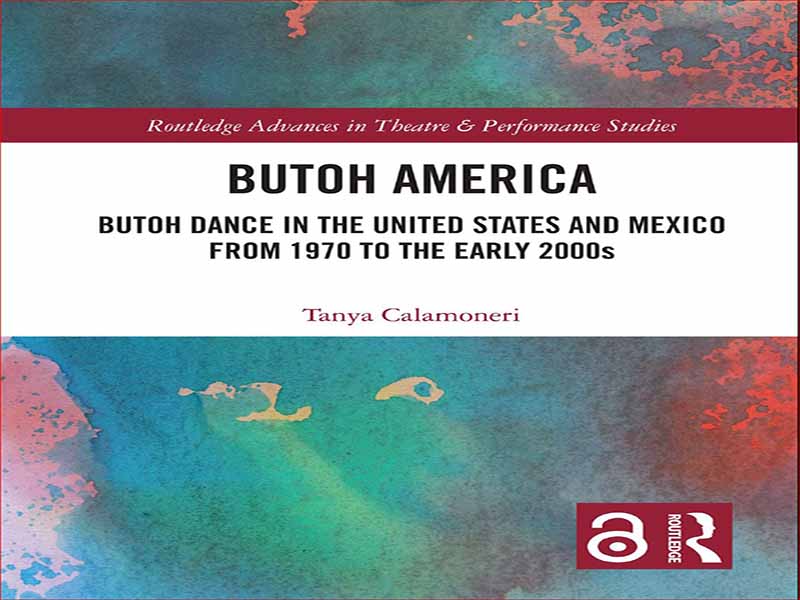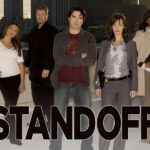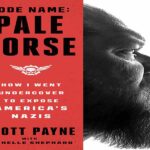- عنوان کتاب: Butoh America / Butoh Dance in the United States and Mexico from 1970 to the early 2000s
- نویسنده/انتشارات: Tanya Calamoneri
- حوزه: جامعه شناسی آمریکا
- سال انتشار: 2022
- تعداد صفحه: 193
- زبان اصلی: انگلیسی
- نوع فایل: pdf
- حجم فایل: 6.29 مگابایت
مردی با کت کت و شلوار مشکی در درختی گیر کرده است. با بازویش بین دو شاخه لاغر، پاهای برهنه اش بالای زمین آویزان است. باد شدیدی نامرئی از یک طرف می وزد و او را به جای خود می چسباند. در نهایت، یک جریان متقاطع به پای او برخورد میکند و باعث میشود که به دور فرم گیر کرده او بپیچد. پیچ و تاب او را از تله رها می کند و او به راه بادگیر خود ادامه می دهد و از چشم ها دور می شود.
مرد شینیچی آیووا کوگا بود. این مناسبت اجرای بداهه نوازی در مرکز هنری مندوسینو در کالیفرنیا در سال 2000 بود. استعاره هایی را در مورد ماهیت زندگی، دلبستگی و رنج برانگیخت. حضار از داخل گالری تماشا میکردند و به پنجرههای شیشهای بزرگی که از دو طرف درخت و رقصنده را احاطه کرده بود نگاه میکردند. مثل یک کوچه کوچک فراموش شده بود که توسط یک رهگذر بدبخت تبدیل به یک رویداد اجرایی شد. شیشهای که فضا را احاطه کرده بود باعث میشد آن را مانند یک کرهی برفی عجیب و غریب به نظر بیاورد که برای کسانی که بیرون از آن غوغا میکردند، سکوت میکرد. ما می توانستیم همدیگر را در حال تماشای او تماشا کنیم و تشخیص بدبختی او را در خودمان و همچنین غریبه ای که از طرف دیگر تماشا می کند، ببینیم.
من این خاطره را ذکر می کنم تا بحثی را درباره تغییر حالت های اجرا که در دهه 1970 با ظهور هنر پرفورمنس آغاز شد، شروع کنم. همزمان با تغییر مکاتب فکری در عملکرد آمریکایی، مکانها نیز شروع به تغییر کردند. گالریها، اتاقهای نشیمن، کلوپهای موسیقی، و فضاهای بیرونی، همگی به عرصههای اجرای مناسب تبدیل شدند. اولین هنرمند بوتو که در سال 1976 وارد ایالات متحده شد، 1 کویچی تامانو در نمایشگاه Japan Now در لس آنجلس اجرا کرد و سپس دعوتنامه ای برای اجرا در موزه هنر مدرن سانفرانسیسکو (SF MOMA) دریافت کرد. اگرچه اینها مؤسسات تأسیسی بودند و هنرهای نمایشی به طور هدفمند خارج از چنین ساختارهایی حرکت کردند، همسویی رقص و هنرهای تجسمی جفت مهمی با تأثیرات رویدادهای آینده بود. نقطه ورود اولیه بوتو از طریق گالری ها و دیگر فضاهای جایگزین، عنصر مهمی از جایگاه بوتو در قاره آمریکا است. این قرارگیری عملاً آن را بهعنوان هنر پرفورمنس شناسایی کرد، با تمام تداعیهایی که با آزمایش بدن، تجربههای افراطی برای اجراکنندگان و مخاطبان به طور یکسان، و بازتعریف بنیادی ژانرهای هنری موجود وجود داشت. هنرمندان و دانشآموزان آمریکایی که زیباییشناسی و روشهای بوتو ژاپنی را اتخاذ کردند که با اهداف هنرمندان اجراهای آوانگارد همسو بودند. آنها به دنبال ساختن رقص جدید، تئاتر جدید، موسیقی جدید، هنرهای تجسمی جدید یا بازآفرینی هیچ رشته ای نبودند. آنها در تلاش بودند تا بیان جدیدی ایجاد کنند، و butoh کلیدهای حیاتی بسیاری را برای آن تلاش فراهم کرد.
واژگان حرکتی حاصل در اجرا که در دهههای 1980 و 1990 پدیدار شد، از این برخوردها و الهامات چندوجهی نشأت گرفت و یک رویکرد مشترک و مشترک ایجاد کرد. این بدان معنا نیست که همه هنرمندان در یک سبک خاص کار می کردند، در واقع برعکس. با این وجود، کار آنها مانند مشابهان خوانا بود، زیرا آنها درگیر سؤالات اجتماعی و هنری مشابهی بودند: چگونه می توانستند در برابر ساختارهای هنجاری مقاومت کنند؟
رمزی برت، محقق رقص، مفهوم دانش اجرای معاصر را بهعنوان «یک منبع مشترک – یک مشترک – به جای کالایی که از آن سود مالی ایجاد میکند» توضیح میدهد (برت 2017، 71). برت می نویسد که با استفاده از مقاله جودیت ریول در سال 2008 “مقاومت، ذهنیت ها، مشترک”، “مشترک فضایی است که در آن جامعه مشترک می تواند با هم کار کند به گونه ای که به تفاوت های منحصر به فرد آنها نسبت به یکدیگر احترام بگذارد و ارزش قائل شود تا اینکه کاهش یابد. به یکنواختی و یکسانی» (برت 2017، 60). برت به تغییر جنبشهای ضدفرهنگی به سمت جایگزینهای غیر سلسله مراتبی برای ساختارهای جریان اصلی اشاره میکند، بنابراین جامعه کثرتگرایانهتری ایجاد میکند. رقصندگان در جستجوی اصالت بودند، و «اشکال و رویکردهای جدیدی که در دهه 1970 پدیدار شد، به فردیت و استقلال شخصی در کنار مشارکت اجتماعی معنادار ارزش میداد» (برت 2017، 36). برت بیش از یک نمایش بیان شخصی، این تمایلات را در پرتوی کاملاً سیاسی مطرح می کند. او از مشارکت در عوام به عنوان وسیله ای برای «عدم حکومت» یاد می کند. او می نویسد:
غیر حکومتی به طور مستمر درگیر نگهداری و حفاظت از
مشترکات از طریق باز کردن فضاهایی که نسبتاً عاری از تأثیرات کنترل، تنظیم یا عادی سازی هستند.
A man in a black suit jacket is stuck in a tree. With his arm wedged in between two skinny branches, his bare feet dangle above the ground. An invisible gale-force wind blows from one side, pinning him to his perch. Eventually, a cross¬current hits his leg, causing it to spiral around his stuck form. The twisting frees him from his trap, and he continues on his windswept way, staggering out of sight.
The man was Shinichi Iova-Koga. The occasion was an improvisational per¬formance at Mendocino Arts Center in California in 2000. As a dancer new to butoh, I found the short dance to be simple yet profound. It evoked metaphors about the nature of life, attachment, and sufering. The audience watched from inside the gallery, peering out large glass windows that surrounded the tree and dancer on two sides. It was like a little forgotten alley that was activated into a performance event by a hapless passerby. The glass surrounding the space made it feel like a strange snow globe, silent to those outside with a deafening squall inside. We could watch each other watching him and see the recognition of his plight in our own, as well as that of the stranger watching from the other side.
I mention this memory to begin a discussion about the changing modes of performance that began in the 1970s with the advent of performance art. Concomitant with shifting schools of thought within American performance, the venues also began to change. Galleries, living rooms, music clubs, and outdoor spaces all became viable performance arenas. The frst butoh artist to arrive in the United States in 1976,1 Koichi Tamano performed in the Japan Now Exhibition in Los Angeles and then received an invitation to perform at the San Francisco Museum of Modern Art (SF MOMA). Though these were established institutions, and performance art moved purposefully outside of such structures, the alignment of dance and visual arts was a signifcant pairing with repercussions for future events. Butoh’s initial entry point through galler¬ies and other alternative spaces is an important element of butoh’s place in the Americas. This placement efectively identifed it as performance art, with all of the associations with body experimentation, extreme experiences for per¬formers and audience alike, and radical redefnitions of existing artistic genres. The American artists and students that adopted Japanese butoh’s aesthetics and methods aligned with the goals of avant-garde performance artists; they weren’t looking to make new dance, new theater, new music, new visual art, or rede¬fne any one discipline. They were trying to make new expression, and butoh provided many vital keys to that quest.
The resulting movement vocabulary in performance that emerged in the 1980s and 1990s drew from these multifaceted encounters and inspirations and developed a common, shared approach. That is not to say that all artists worked in one specifc style, in fact, quite the contrary. Nonetheless, their work was legible as of the same ilk, because they were engaged in similar social and artis¬tic questions: how could they resist normative structures?
Dance scholar Ramsay Burt elaborates a notion of contemporary perfor¬mance knowledge as “a shared resource—a commons—rather than a com¬modity from which to generate fnancial proft” (Burt 2017, 71). Drawing from Judith Revel’s 2008 essay “Resistance, Subjectivities, Common,” Burt writes, “the common [is] a space where the community of the common can work together in ways that respect and value their singular diferences from one another rather than being reduced to uniformity and sameness” (Burt 2017, 60). Burt notes the shift in counter-cultural movements toward nonhi¬erarchical alternatives to mainstream structures, thus creating a more pluralis¬tic community. Dancers were searching for authenticity, and “the new forms and approaches which emerged in the 1970s valued individuality and personal autonomy alongside meaningful communal engagement” (Burt 2017, 36). More than just a demonstration of personal expression, Burt casts these ten¬dencies in a decidedly political light. He refers to participating in the commons as a means of “ungoverning.” He writes:
Ungoverning is continually engaging in the maintenance and protection of
the commons through opening up spaces that are relatively free from the efects of control, regulation, or normalization.
این کتاب را میتوانید از لینک زیر بصورت رایگان دانلود کنید:
Download: Butoh America



































نظرات کاربران